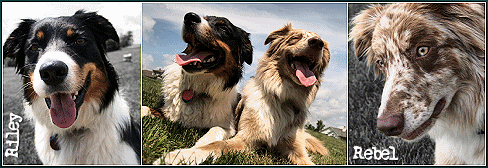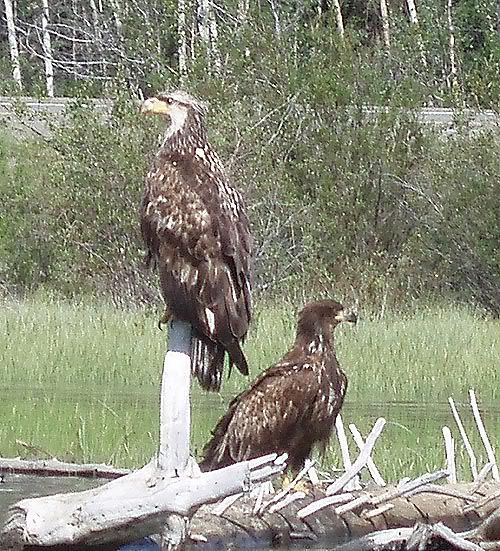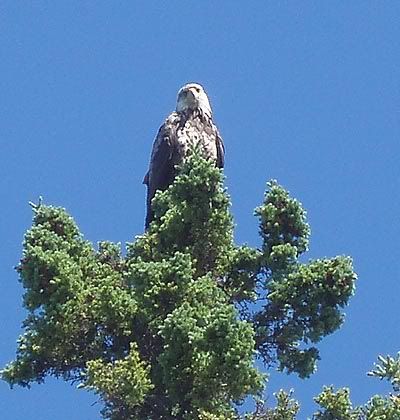Peregrine Falcons feed almost exclusively on birds, such as
doves,
waterfowl and
songbirds, but occasionally they hunt small mammals, including bats, rats, voles and rabbits. Insects and reptiles make up a relatively small proportion of their diet. On the other hand, a growing number of city-dwelling Falcons find that
feral pigeons and
Common Starlings provide plenty of food. Peregrine Falcons also eat their own chicks when starving.
Peregrine Falcons breed at approximately two or three years of age. They mate for life and return to the same nesting spot annually. Their courtship flight includes a mix of aerial acrobatics, precise spirals, and steep dives. The male passes prey it has caught to the female in midair. To make this possible, the female actually flies upside-down to receive the food from the male's talons. Females lay an average clutch of three or four eggs in a scrape, normally on cliff edges or, increasingly, on tall buildings or bridges. They occasionally nest in tree hollows or in the disused nest of other large birds.
The laying date varies according to locality, but is generally:
The females incubate the eggs for twenty-nine to thirty-two days at which point the eggs hatch. While the males also sometimes help with the incubation of the eggs, they only do so occasionally and for short periods.
Thirty-five to forty-two days after hatching, the chicks will fledge, but they tend to remain dependent on their parents for a further two months. The tiercel, or male, provides most of the food for himself, the female, and the chicks; the falcon, or female, stays and watches the young.
The average life span of a Peregrine Falcon is approximately eight to ten years, although some have been recorded to live until slightly more than twenty years of age.










 Reply With Quote
Reply With Quote







 Kalei
Kalei












Bookmarks